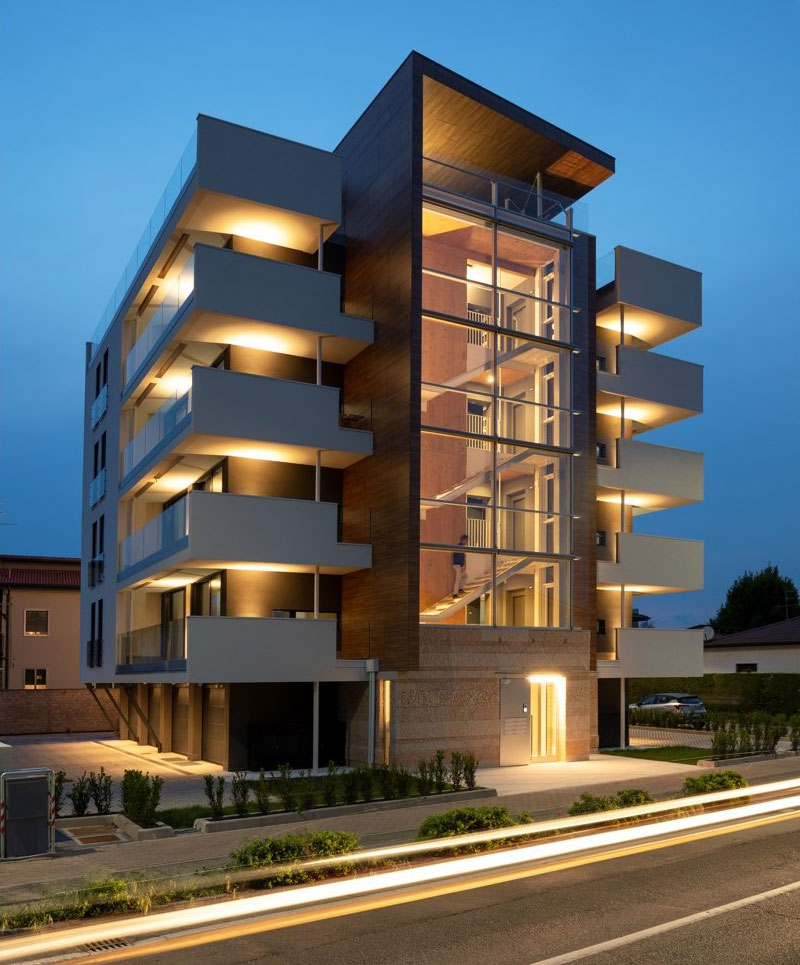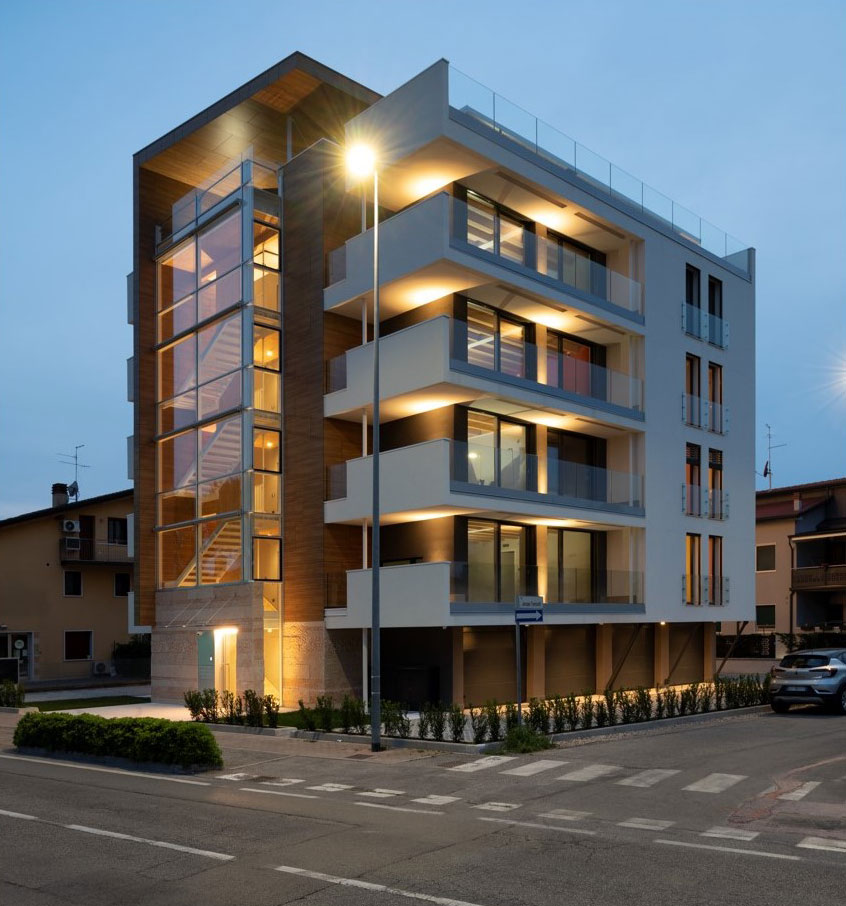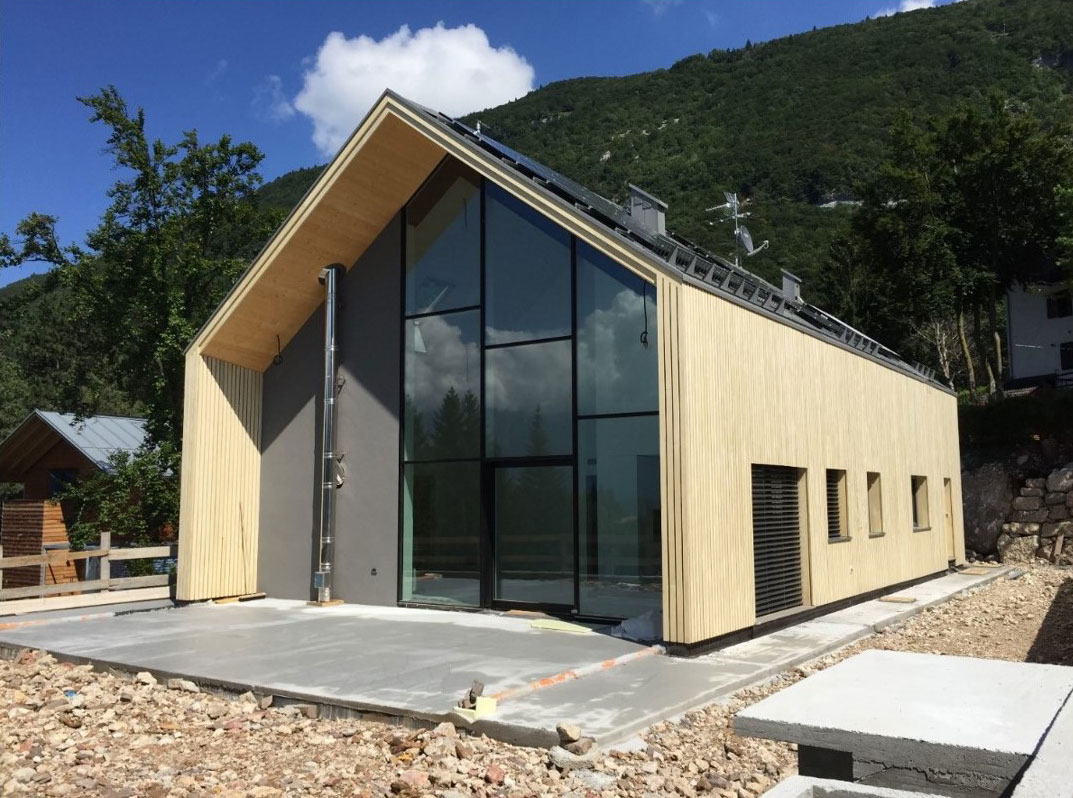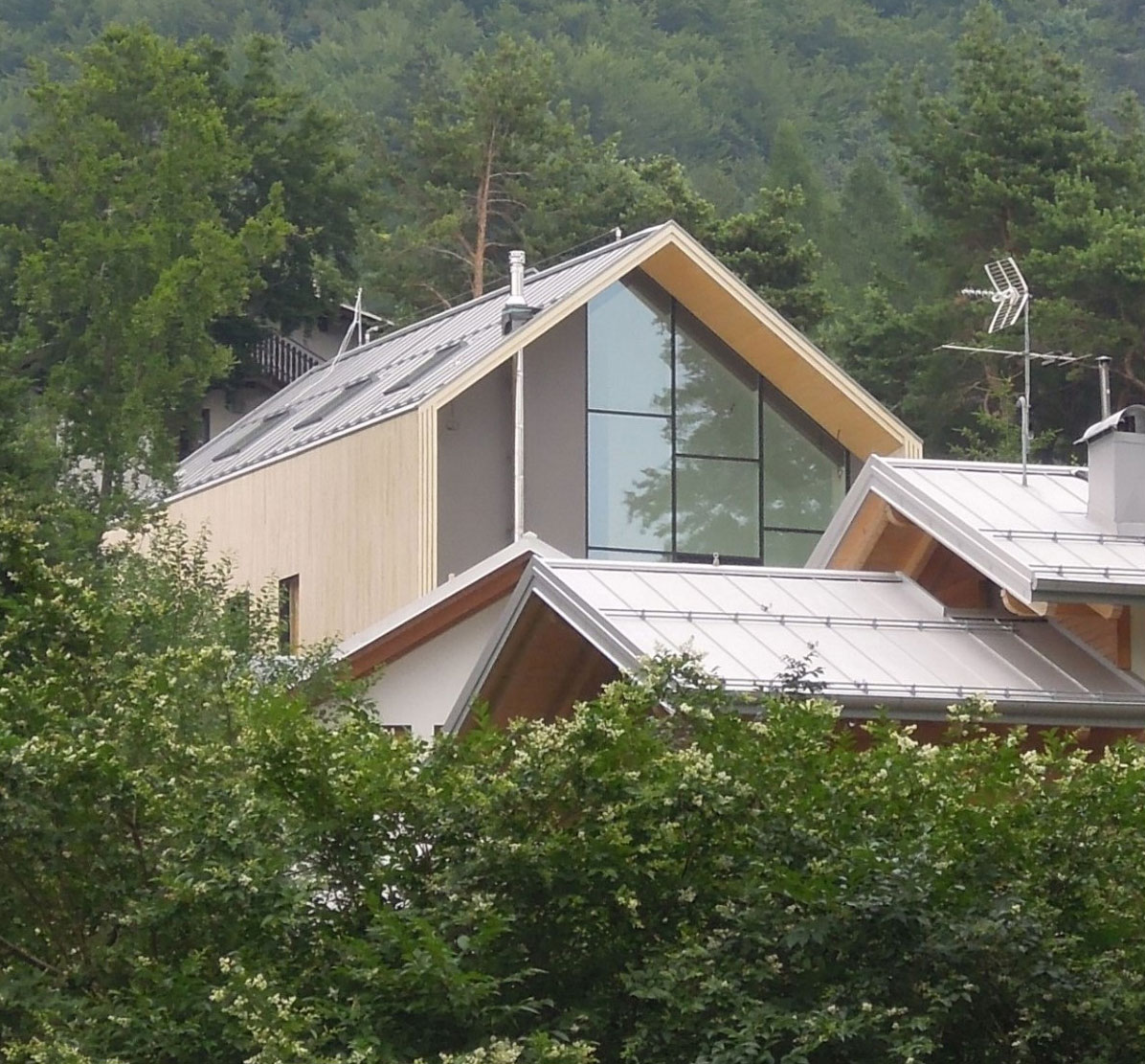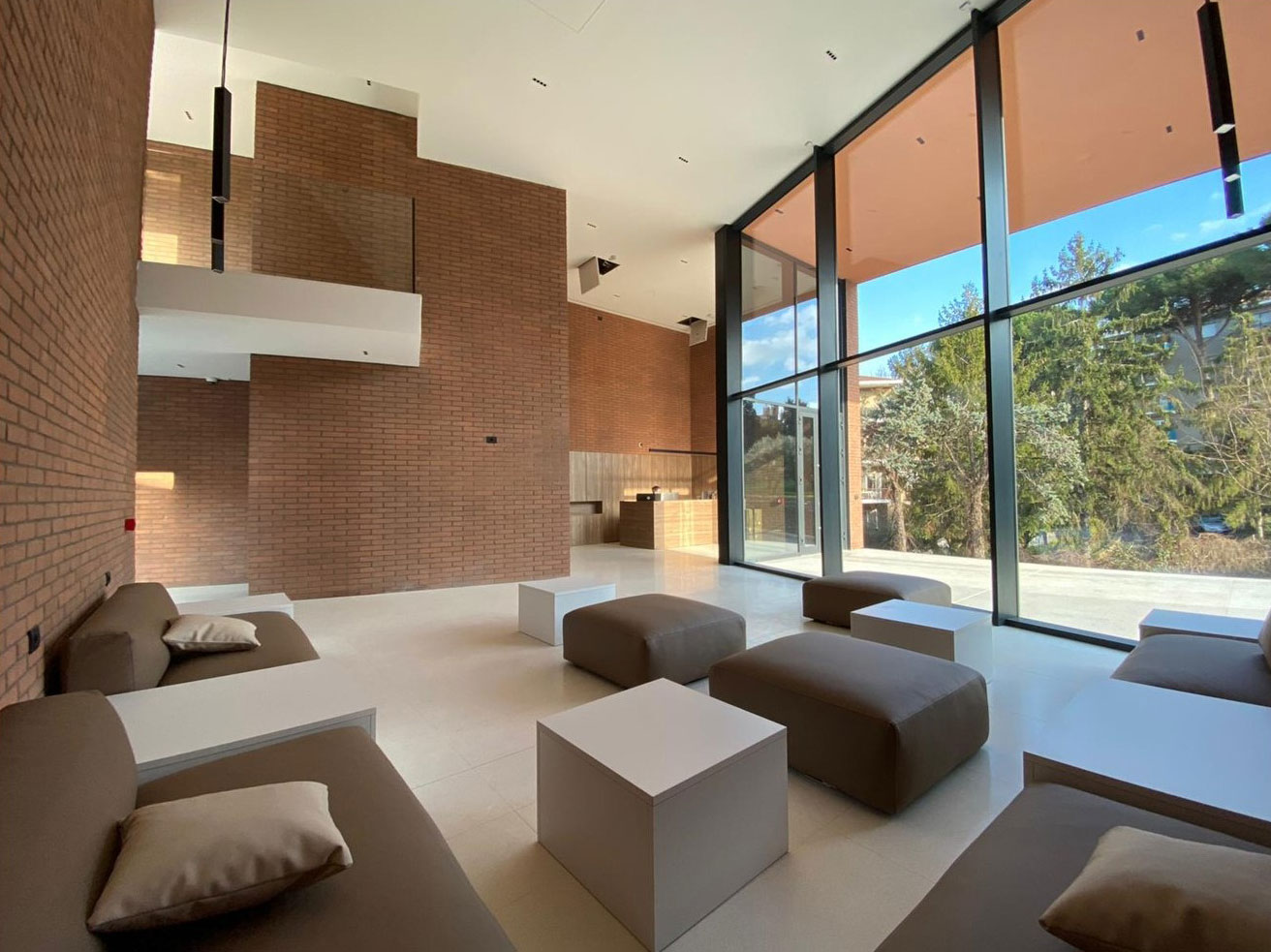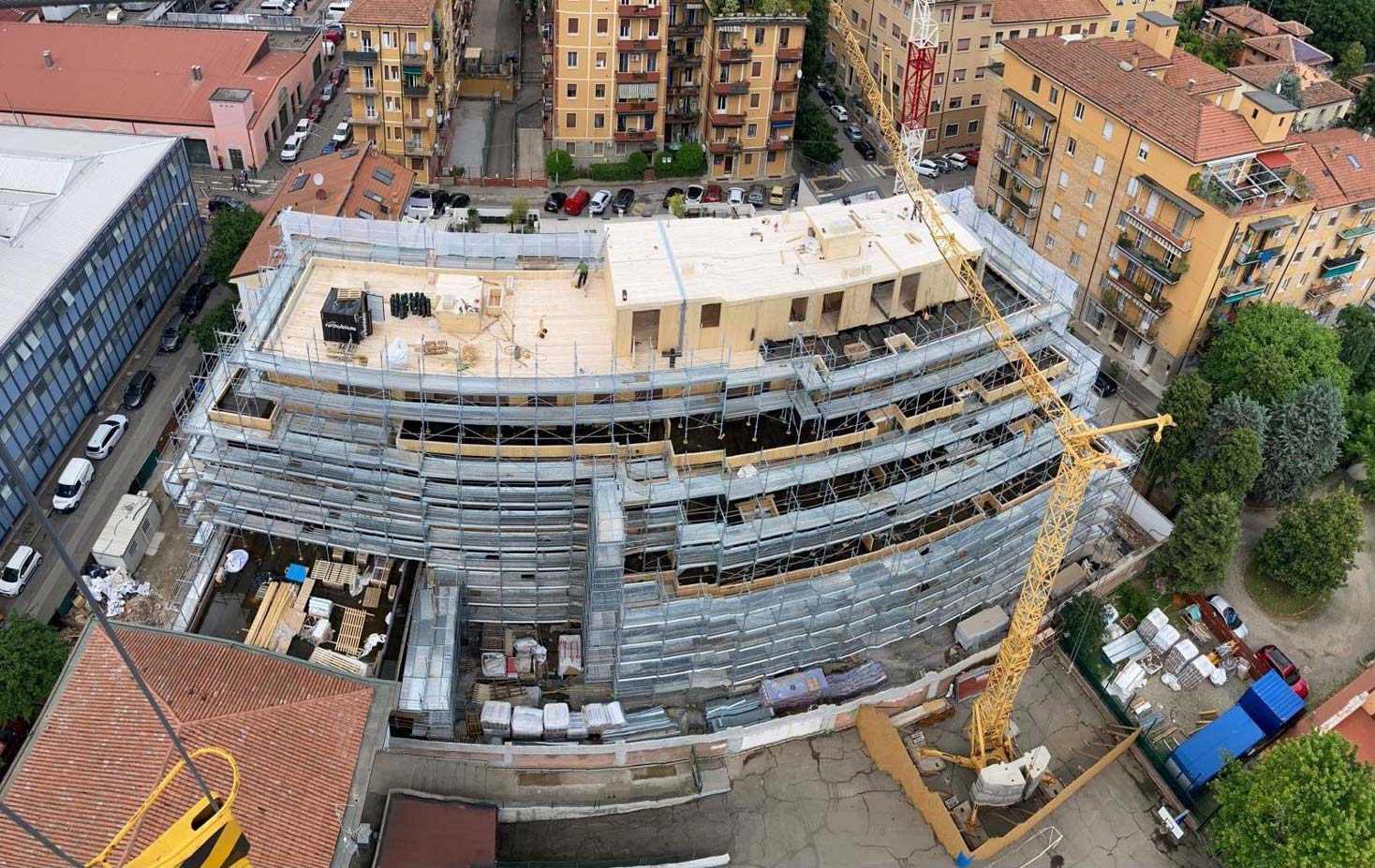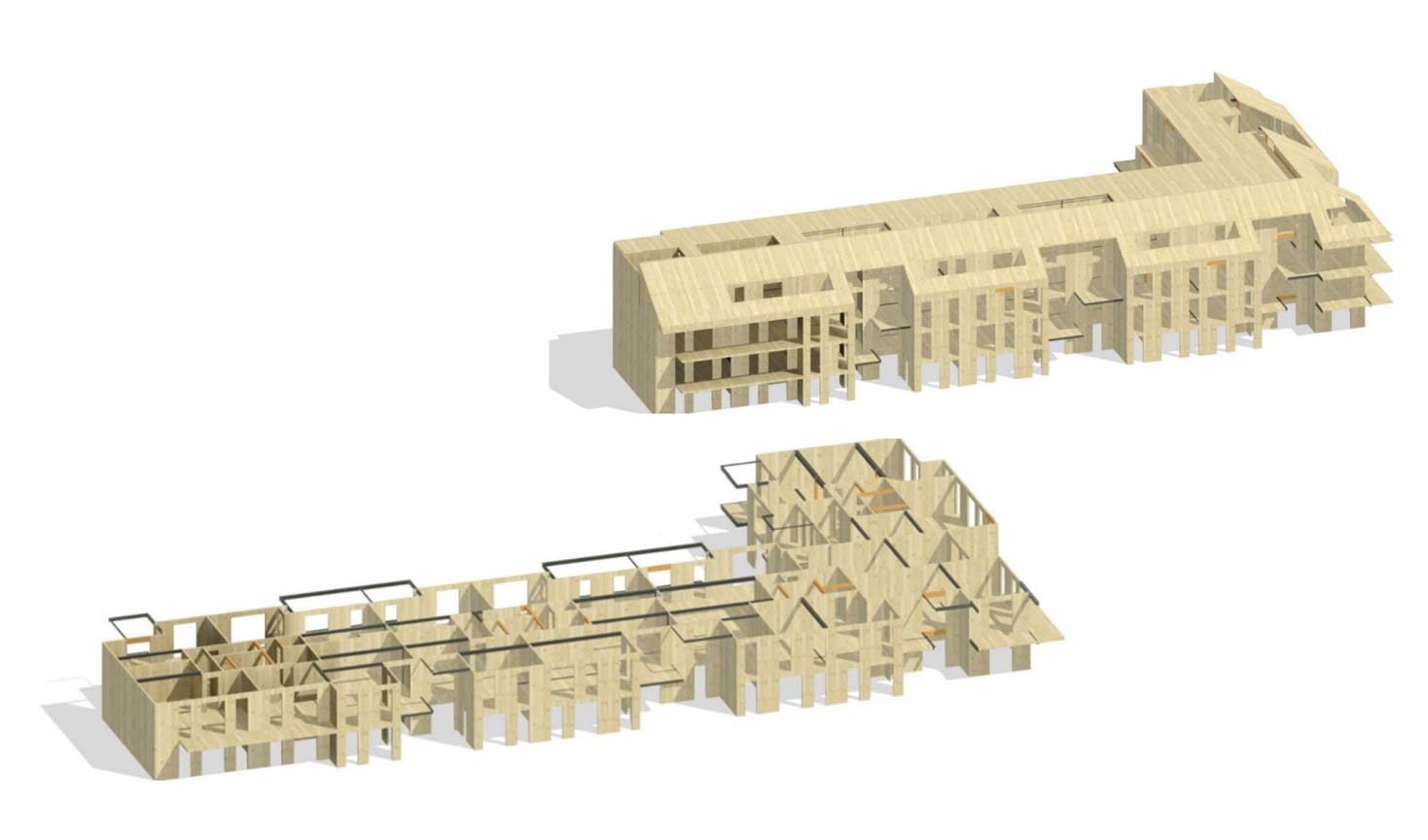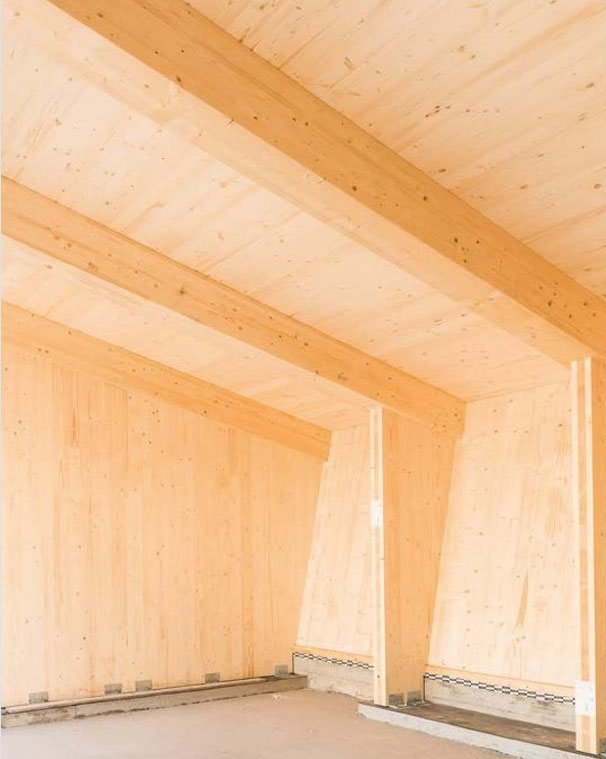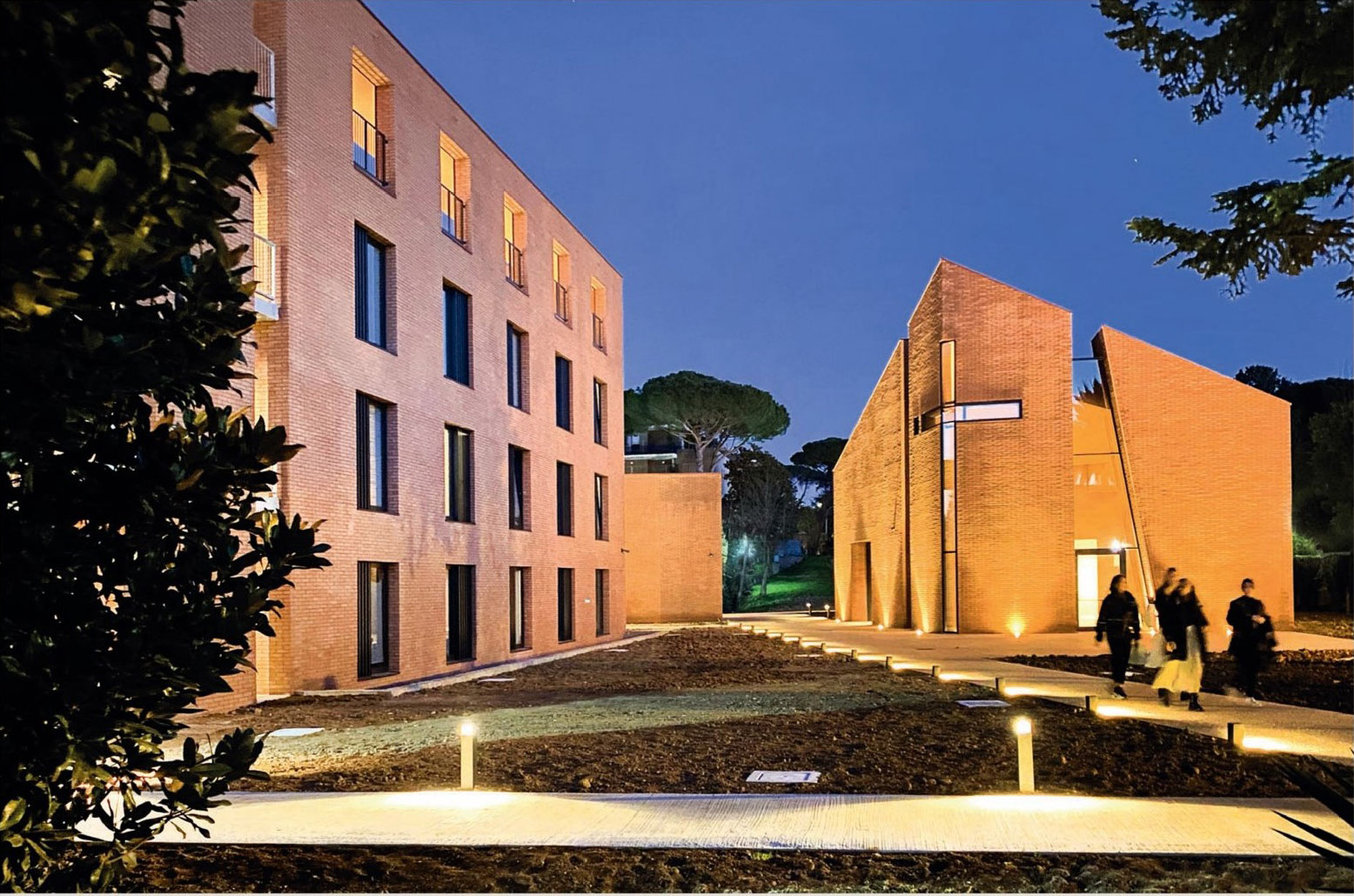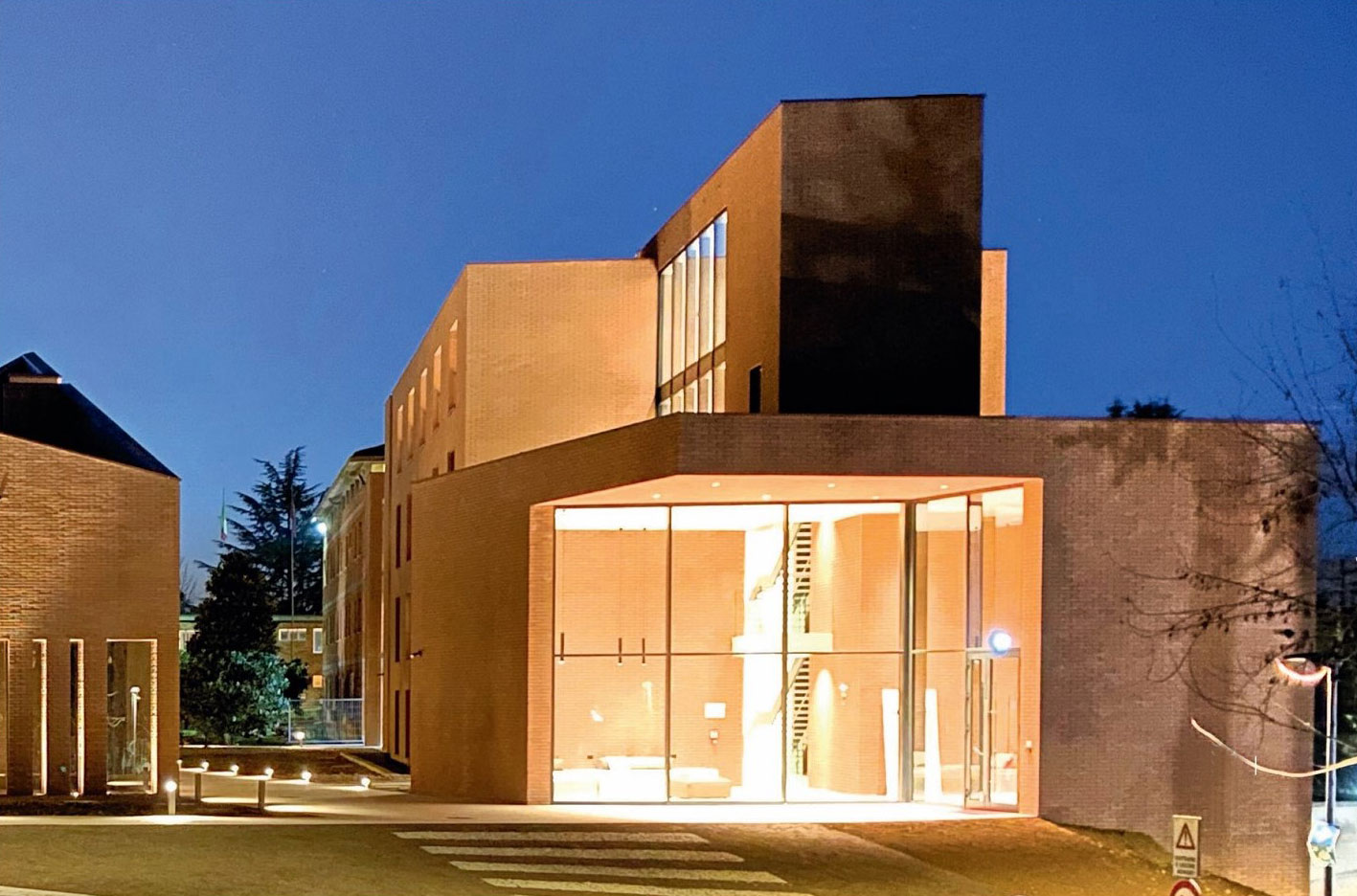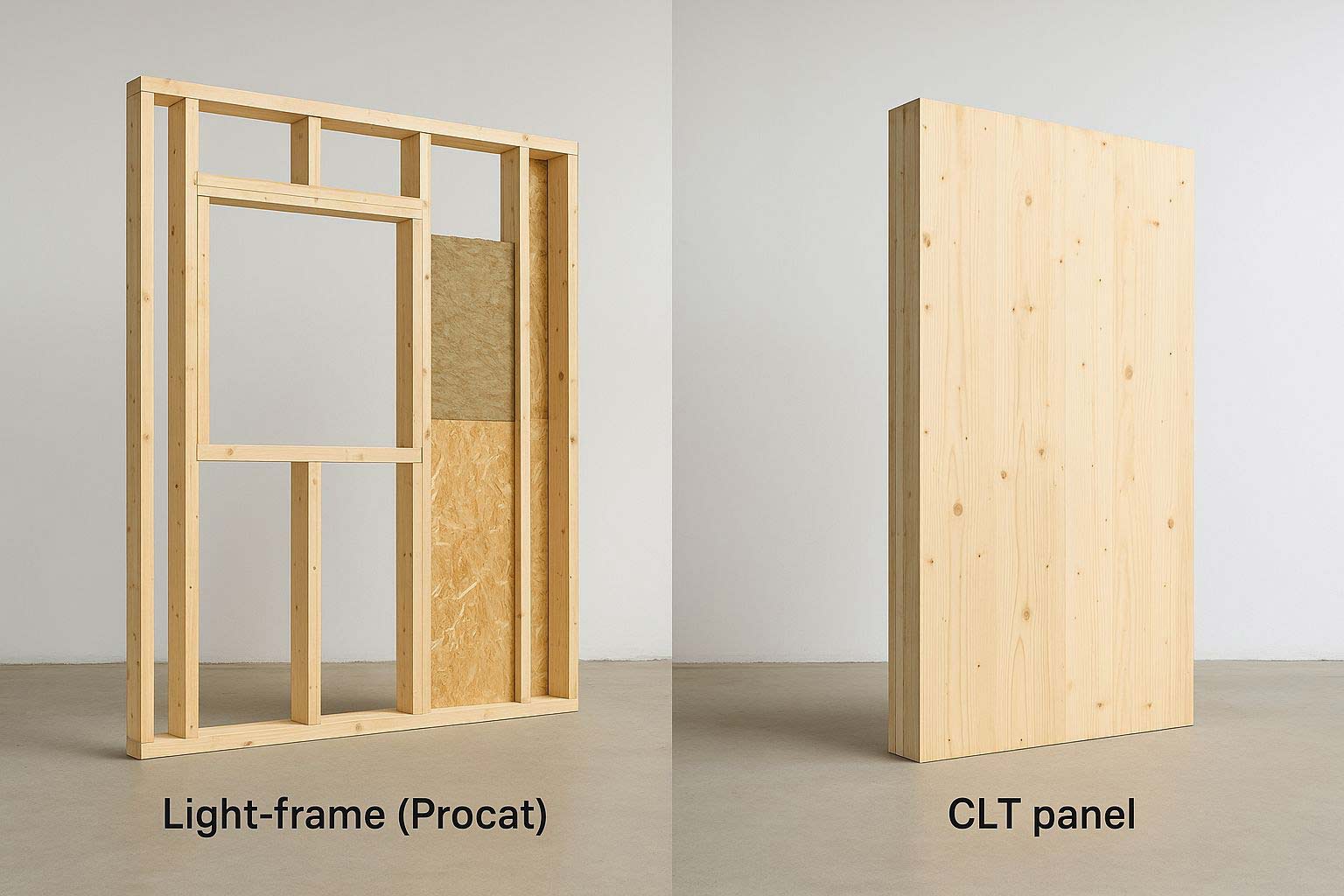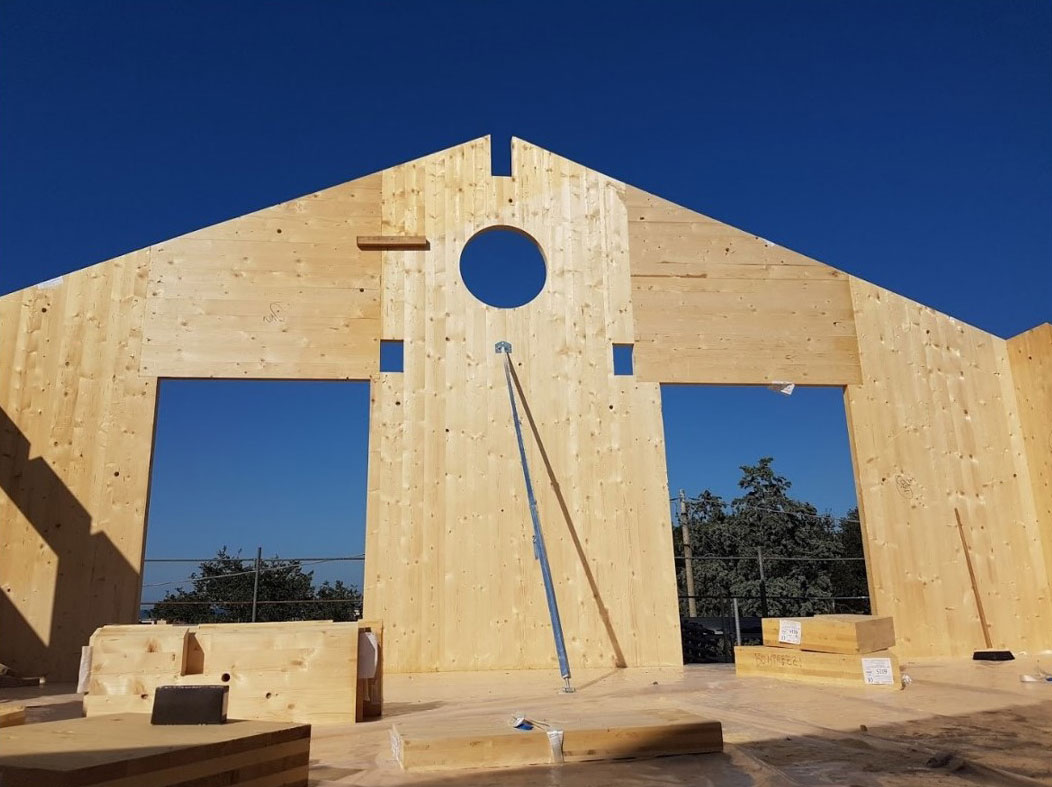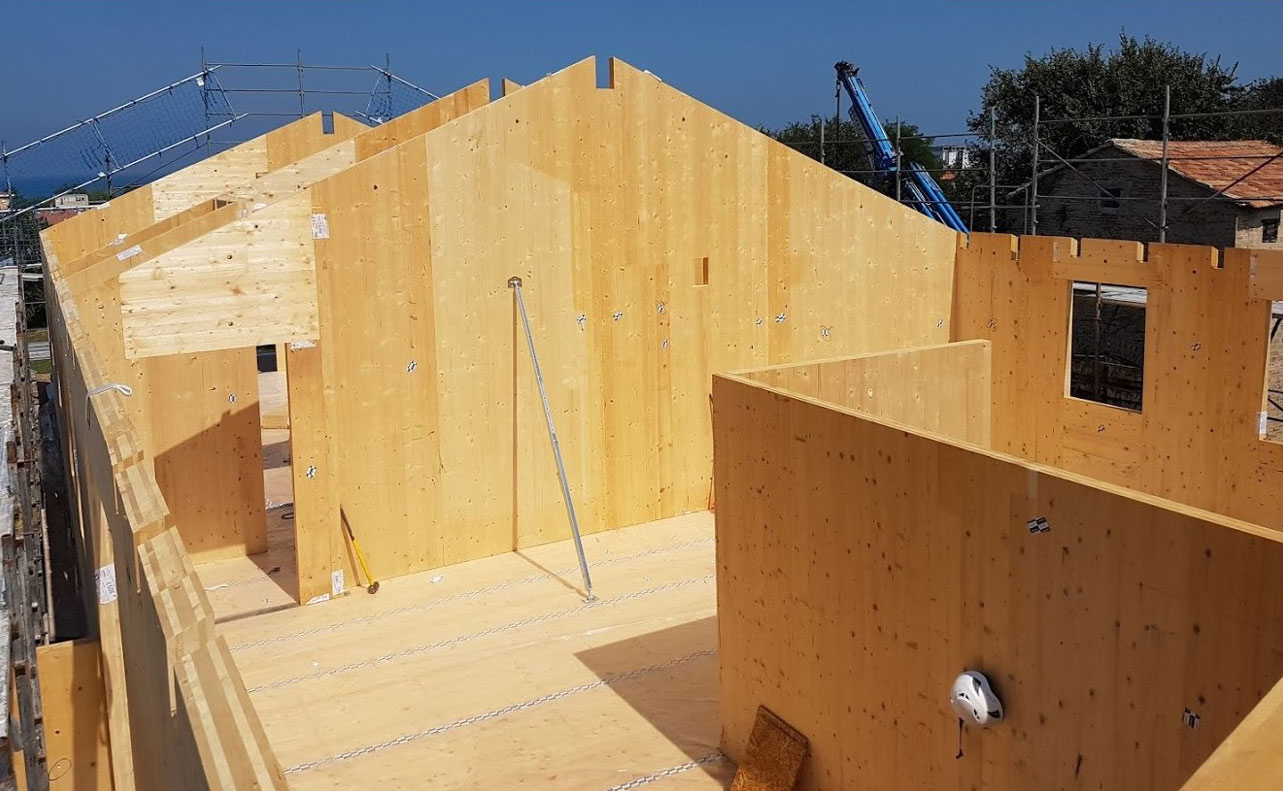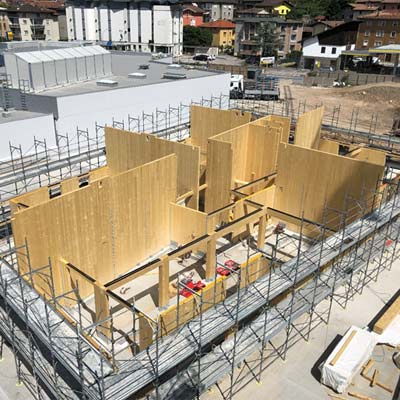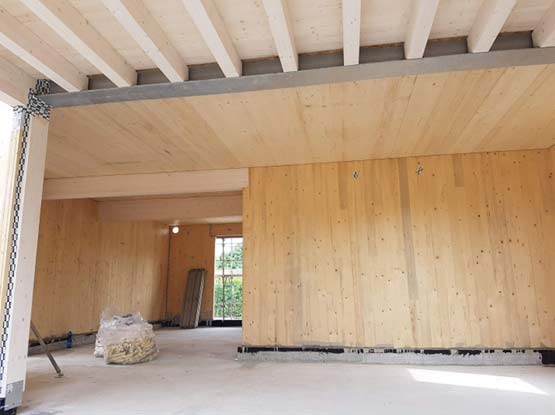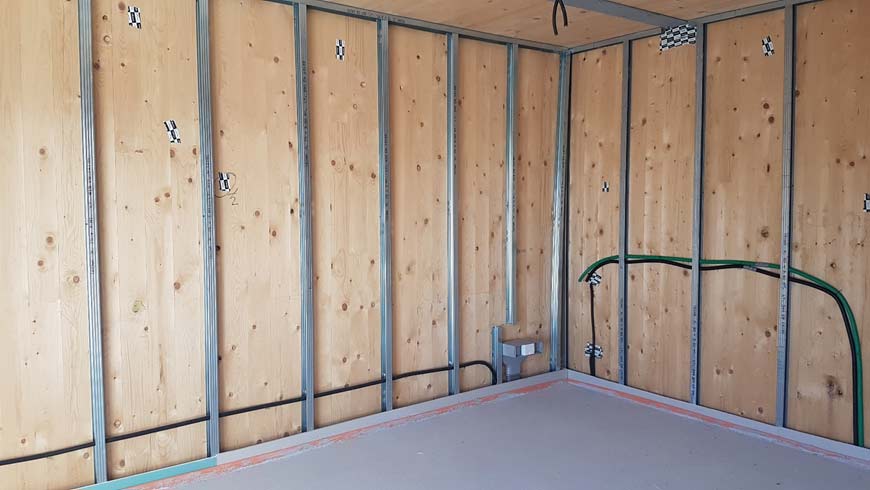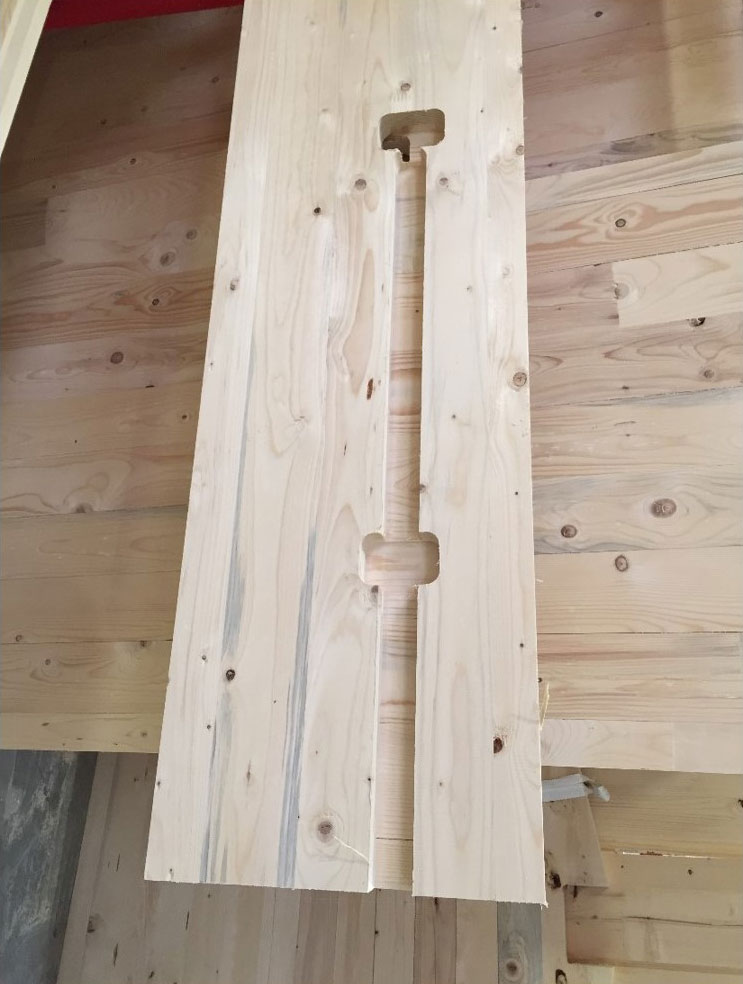How much does a CLT building cost?
Is CLT safe in case of fire?
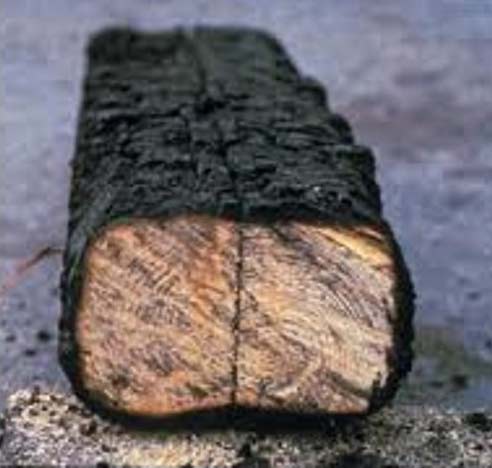
CLT (Cross Laminated Timber) is made of solid wood and has proven fire performance. In case of fire, a natural char layer forms that slows combustion and preserves the wood’s load-bearing capacity. CLT buildings meet European and Greek fire-resistance standards, making them a safe and reliable choice.
This advantage is reflected in specific characteristics:
- The wood charring rate is approximately 0.7 mm per minute.
- Fire resistance can be calculated with precision.
- The surface char layer acts as a natural protective barrier, keeping the inner mass intact.
- Wood does not exhibit critical damage when exposed to high temperatures.
- A CLT structure provides at least 60 minutes of fire resistance.
- With proper design and technical measures, fire resistance can readily reach 120 minutes or more.
How durable are CLT buildings?
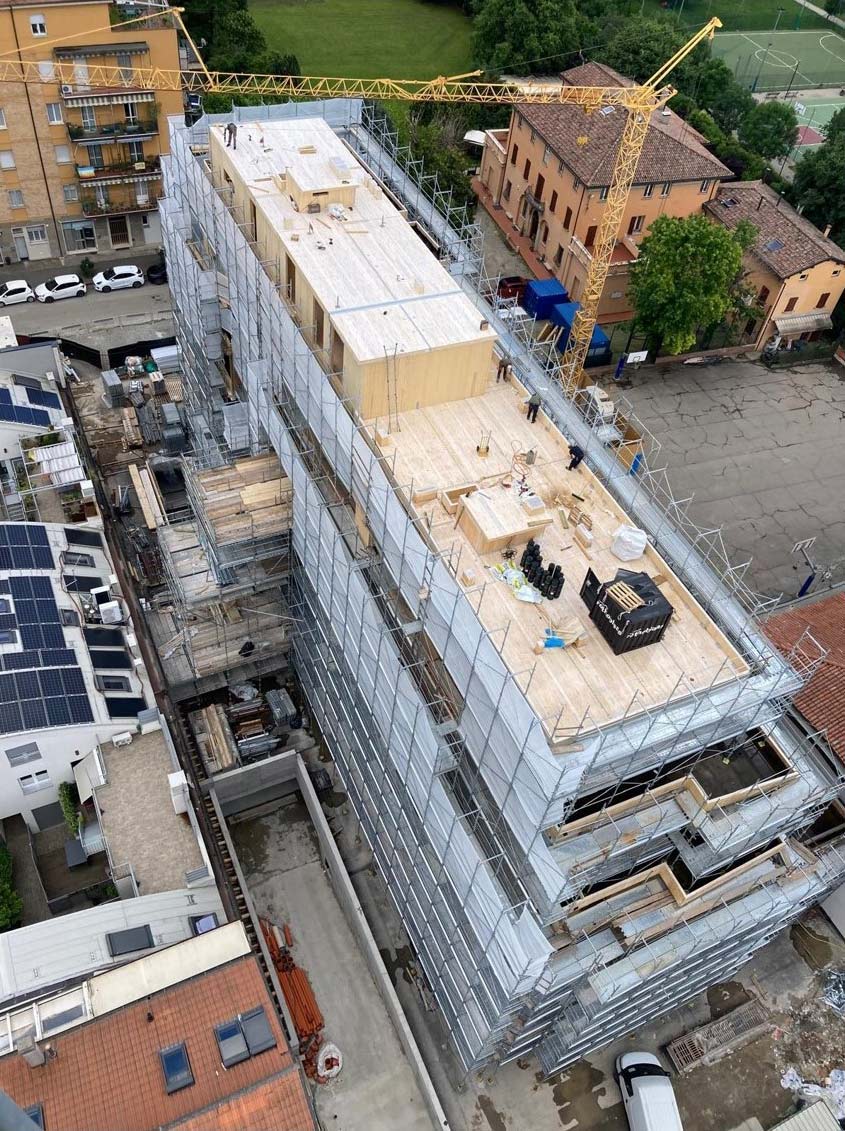
CLT structures offer exceptional mechanical strength and high seismic performance thanks to the cross-laminated arrangement of solid wood layers. They perform reliably under earthquakes, heavy loads, and extreme weather conditions, fully meeting Greek regulatory requirements for structural adequacy and fire protection.
Representative Case
A representative example is the XLAM Dolomiti project in Rovereto, Italy: the design, supply, and installation of the country’s tallest timber building, featuring 9 floors plus an additional 5 floors in an adjacent building. This project demonstrates the real-world reliability and potential of CLT for large-scale applications, combining innovation, safety, and architectural quality.
Does it require maintenance?
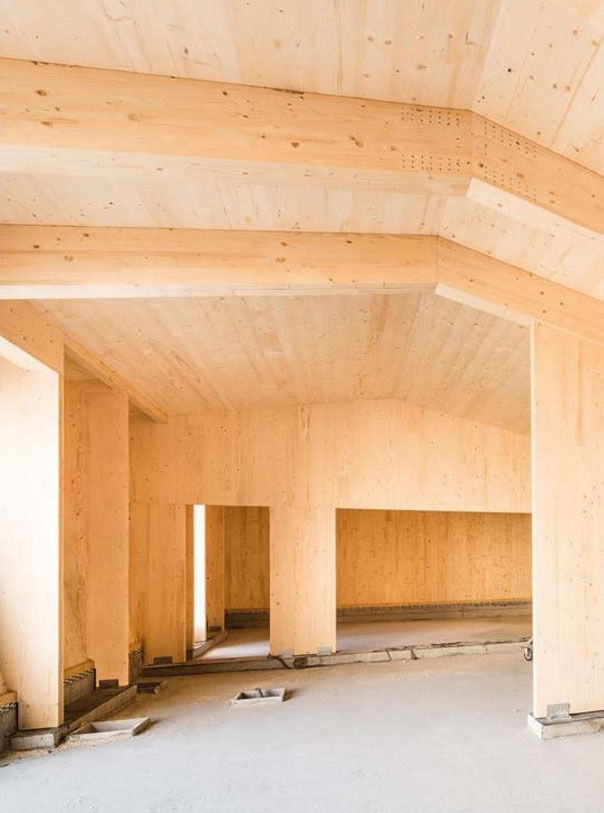
No, CLT requires no maintenance provided that the external thermal insulation system is installed in accordance with European specifications.
In CLT Greece projects, every CLT timber home is protected with a continuous mineral wool insulation system, which delivers:
- Complete protection of CLT against rain, moisture, and ultraviolet (UV) radiation.
- A breathable yet moisture-impermeable exterior layer that lets the wood maintain its natural balance without trapping humidity.
- Certified fire resistance and thermal stability in line with EN 13162 and EN 13501-1 (Class A1).
Thanks to this build-up, the timber remains fully protected and is not exposed to external factors.
Therefore, CLT structures by CLT Greece require absolutely no maintenance, unlike exposed timber constructions that need periodic care.
CLT walls finished with modern external insulation systems retain their mechanical and aesthetic properties for decades, in accordance with EN 16351 and the material’s EPD (Environmental Product Declaration) certifications.
This way, CLT Greece timber homes offer long-term durability, energy efficiency, and zero maintenance needs—a truly sustainable and reliable building system.
Is CLT environmentally friendly?

CLT is a top choice for sustainable construction. It is produced from certified timber, acts as a carbon sink by storing CO₂, and contains no formaldehyde-based adhesives, ensuring a healthy indoor environment. Its low U-value significantly reduces energy consumption.
The sustainability benefits of CLT are also reflected in internationally recognized metrics:
- Carbon Footprint: Measures a building’s total carbon impact based on CO₂ emissions.
- LCA (Life Cycle Assessment): Evaluates environmental impact at every life-cycle stage of the building, from production to end use.
-
Carbon Removal – High-quality CO₂ credits:
- Timber construction: 2 m³ of wood = 1 credit = 1 metric ton of CO₂
- Agroforestry: carbon sequestration through reforestation and agroforestry practices
- CO₂ re-sequestration in soil
In this way, CLT is not just an innovative building material, but a comprehensive tool for reducing environmental impact and strengthening the circular economy in construction.
How is CLT different from prefab (light-frame) systems?
Fill out the form and we will contact you for consultation.

CLT Greece @ The Architect Show
6 & 7 December | Metropolitan Expo
We await you at the largest architectural event in Greece
to discover the future of timber construction with CLT up close!
